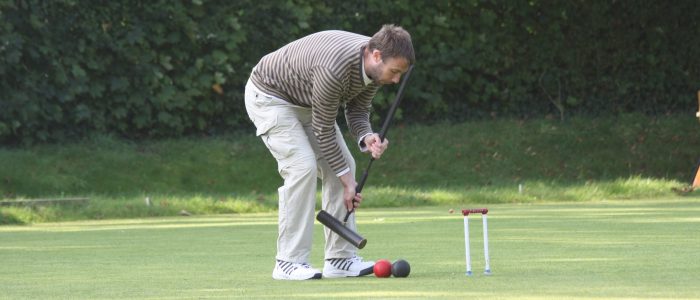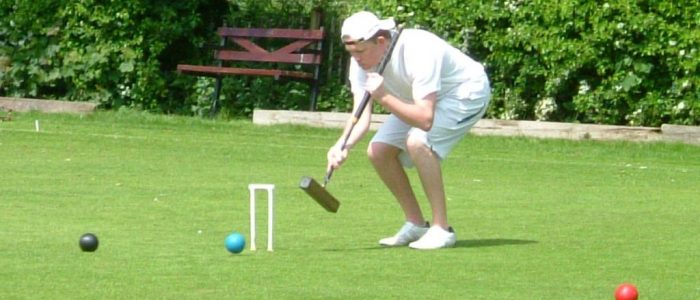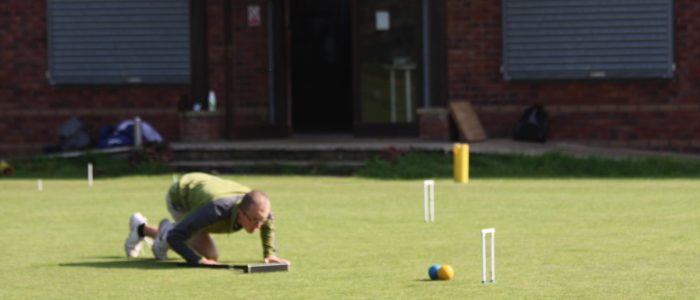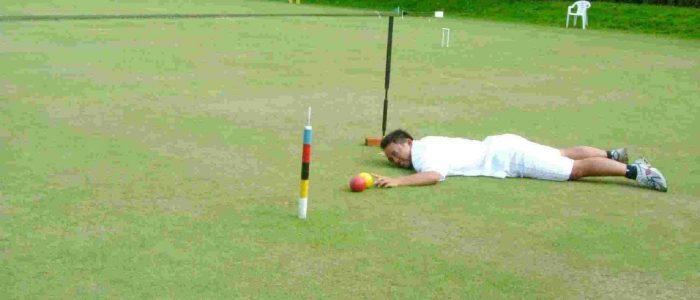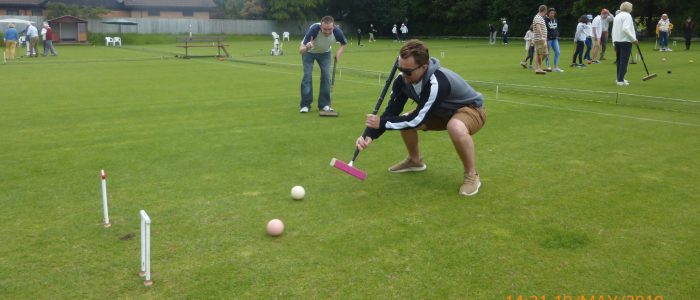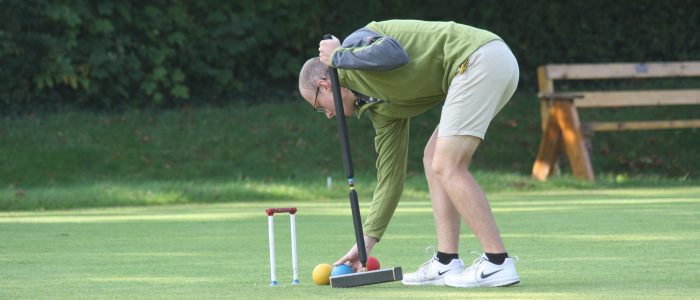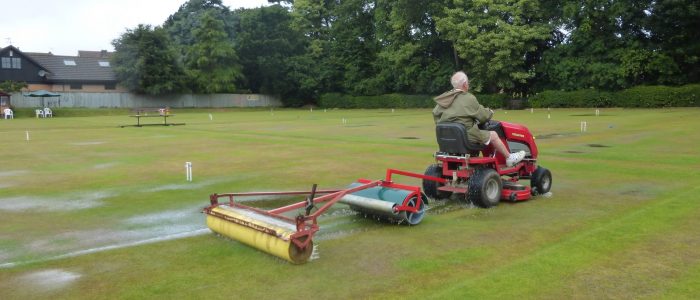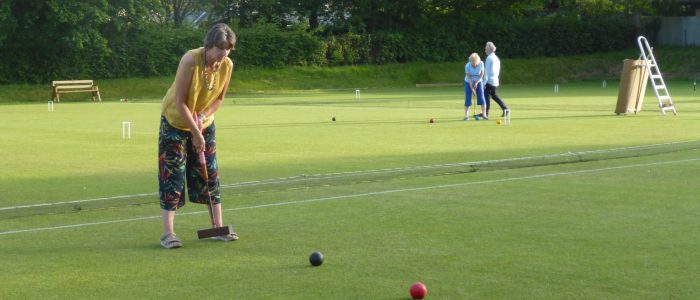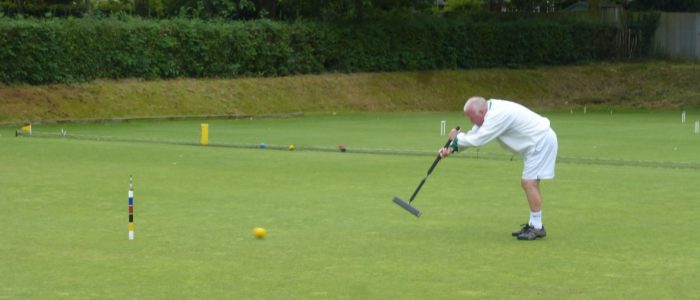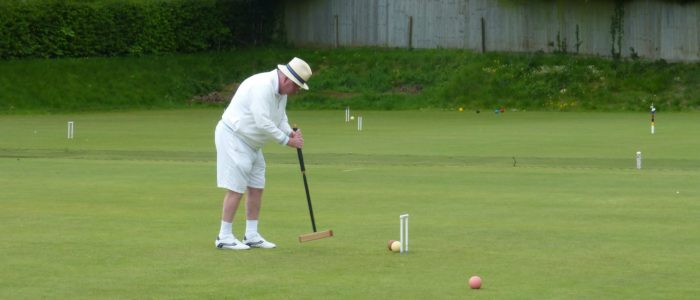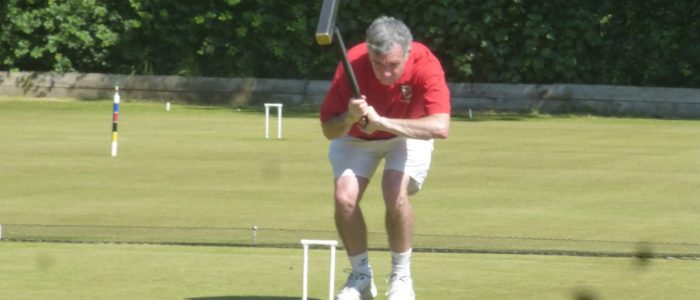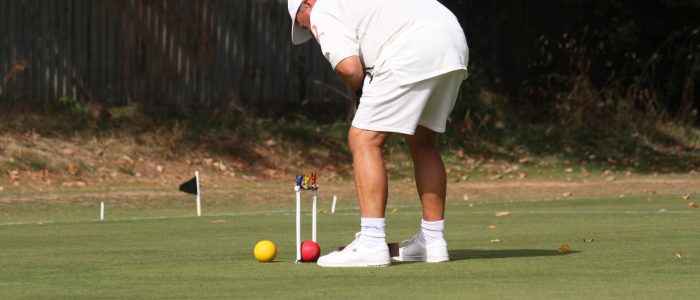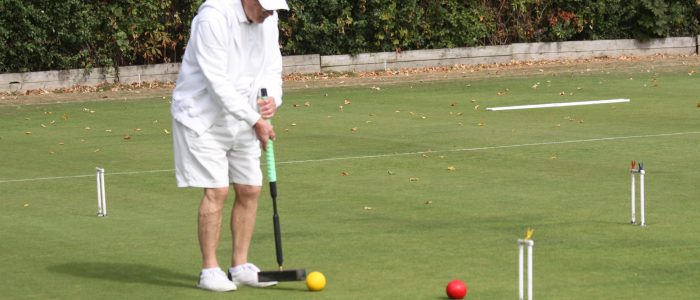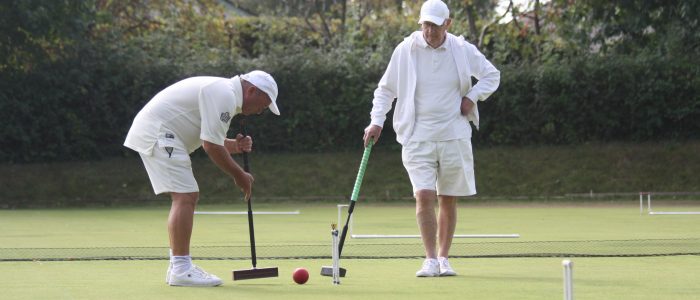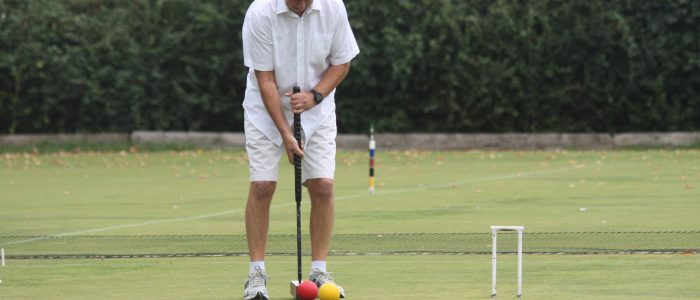This page has been revised in the light of changes announced in February 2016. A synopsis of the changes can be found on this site. Details of the New System can be found on the CA website.
As with Association Croquet, every player is allocated an initial handicap by the handicap committee. For newcomers this is usually done by performing a standard test, thus. Place a ball in corner four. Count how many strokes you take to run hoops 1 to 6 in order. Do this three times and add the number of strokes taken in these three runs together. Look up your handicap on a table. The highest initial handicap you can have is 16, but it can subsequently increase to 20 or beyond. Just as with Association Croquet, your initial handicap is associated with an index value. For every handicap game you win you add 10 to your index and for every loss you subtract 10. For level play you have to refer to a table (issued with your handicap card). A win against a stronger player gives you more than 10 index points and a loss loses you less than 10 index points. You record the results of all your games on your handicap card. As you win and lose games so the index rises and falls. When you reach the threshold for the next handicap so your handicap changes and you should ask a member of the handicap committee to check and sign your card.
In handicap singles games, subtract the lower handicap from the higher. The answer is the number of Extra Turns available to the higher handicap player, usually represented by glass beads. You hand one over to your opponent each time you use one of your Extra Turns. You can take an Extra Turn after any normal turn, but you cannot score a hoop in that Extra Turn.
In handicap doubles games Extra Turns are allocated to individual players, not to the side. The higher handicap for each side is compared. The higher of the two gets half the difference. The lower handicap for each side is compared and the same calculation is done.
